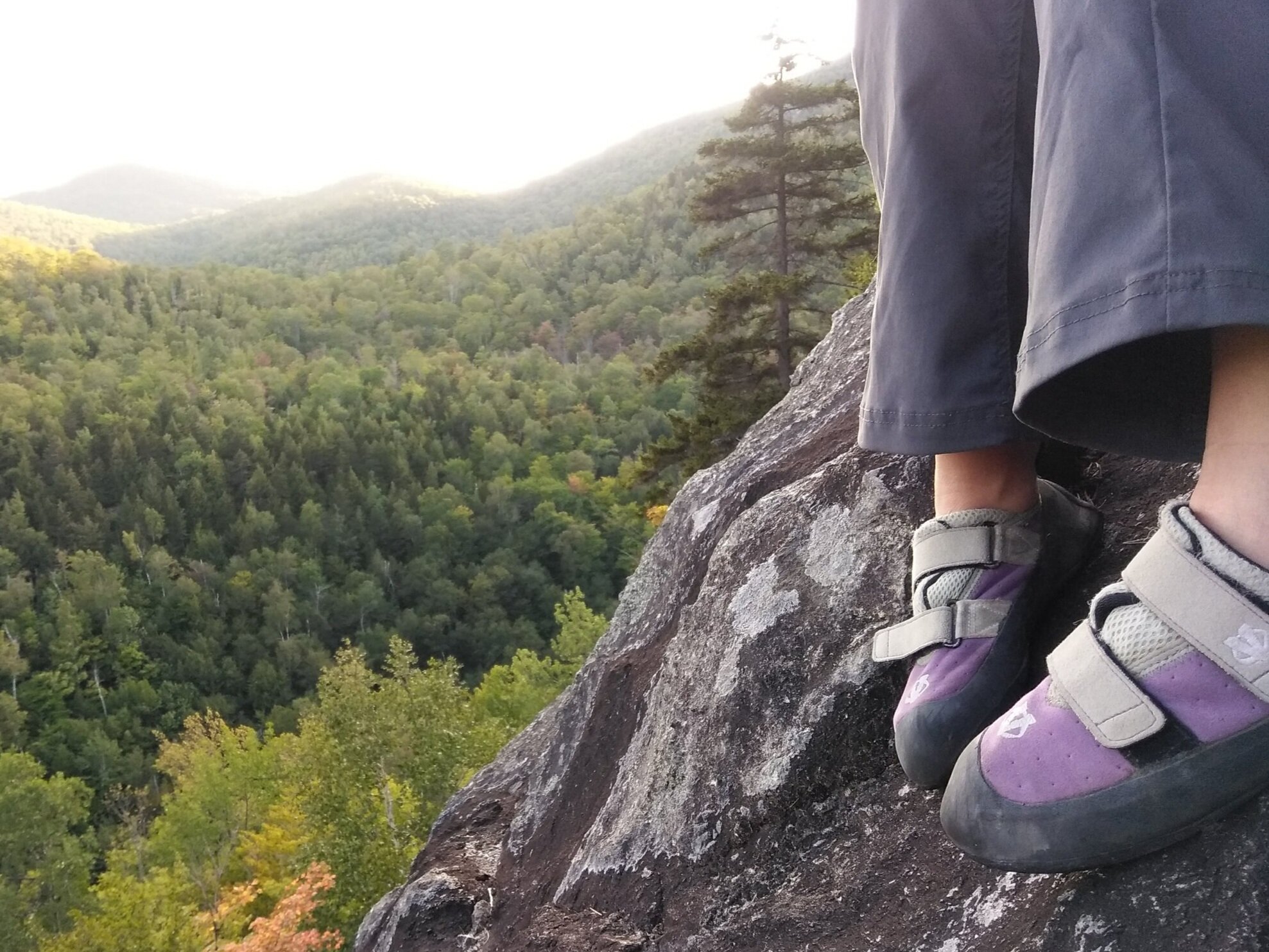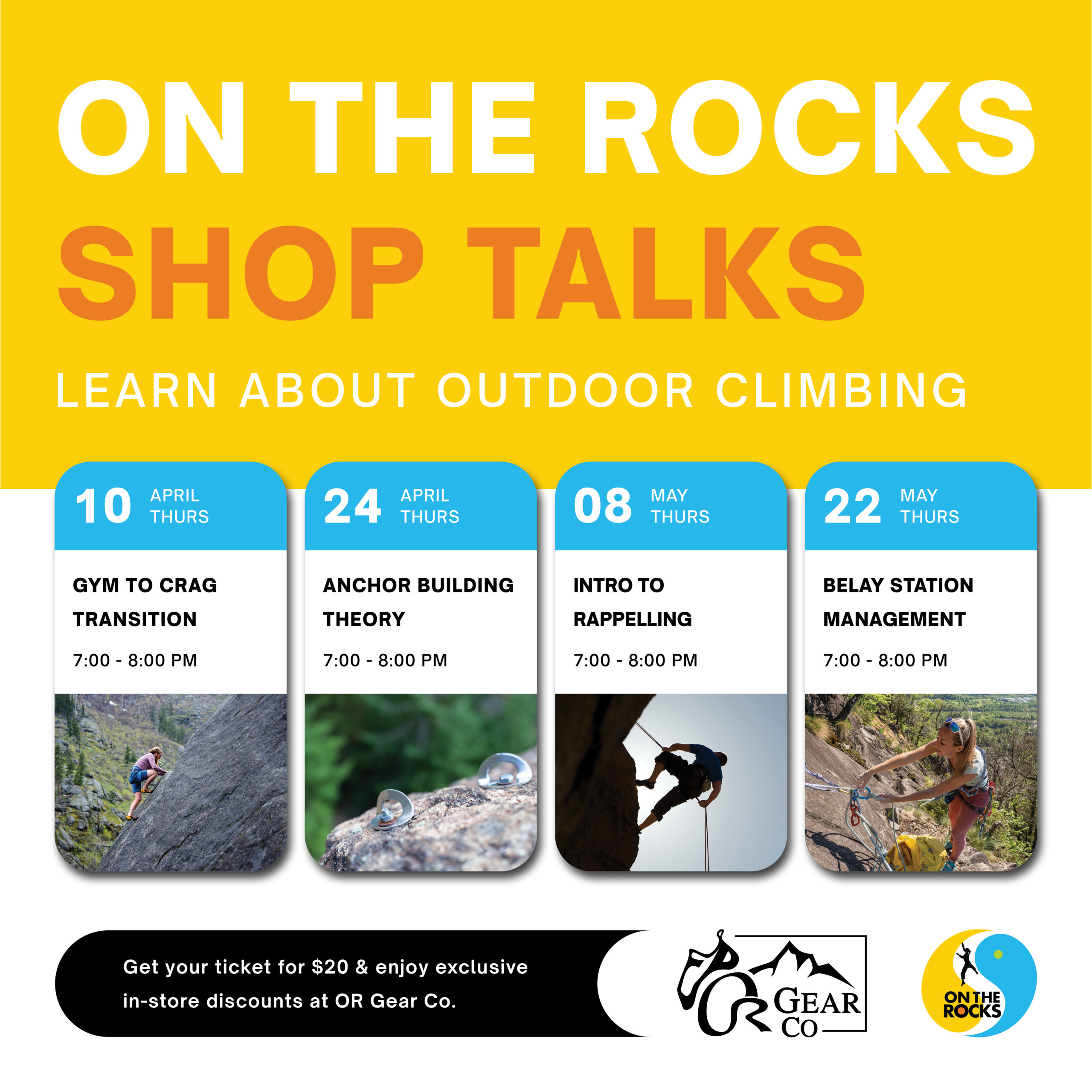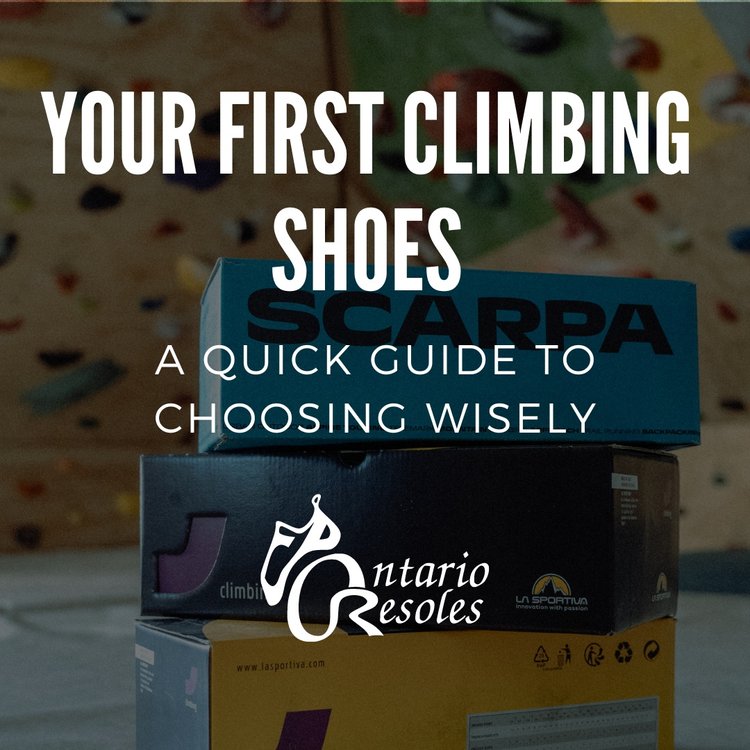May 17
Written By Ontario Resoles
Make your climbing shoes smell better, last longer, and perform and fit better.
We get asked a lot about shoe care. Climbing shoes aren’t cheap, and how you care for them has an enormous effect on how much value you get for your dollar. Take good care of your shoes and they’ll last you years, multiple resoles, and countless sends. We’re going to show you how. We’ll be getting somewhat technical here, and going into detail on a number of subtopics. If you just want quick answers, check the last paragraph for a TLDR
Nobody likes to talk about it, but we all sweat and shed dead skin cells into our climbing shoes, in addition to tracking in dirt and chalk from the bottoms of our feet. This process creates a moist environment rich with organic material inside the shoe: a perfect home for bacteria and fungi. It is these unwelcome lifeforms that are the primary culprits of the notorious climbing shoe stank, and a contributor to degradation of the material from which the shoes’ uppers are made.
The salinity (salt content) and PH imbalance (acidity) of sweat also accumulates in the shoe and causes further damage to the uppers over time. This material degradation can be as simple as weakened stitching or can be a complete hardening and embrittlement of the basic leather/synthetic material of the shoe. Weakened stitching might show up as a looser fitting shoe, or a complete tear. Material degradation and embrittlement can mean that the uppers of the shoe lose structural integrity; often when this happens, the rubber is the only thing holding the shoe together, while a cracked and rotted base lies underneath.
Some signs that your shoes may be nearing an untimely death:
- The shoes feel very stiff when dry, but quickly soften up with temperature and moisture during use.
- Squeezing the toebox of the shoe, or pressing a thumb into the rand produces a crunchy sound or feeling — brittle, cracked and hardened material sliding over itself.
- The shoe feels wrinkly or misshapen inside — especially true of shoes with fabric liners; the stitching degrades and the fabric separates, wrinkles and creases.

A brittle and cracked synthetic upper, only visible after the rubber is peeled away
So, how do you prevent moisture, fungal/bacterial growth, salinity, and acidity?
Moisture is relatively easy to take care of — just let the shoes air-dry after every session. Clip them to the outside of your pack rather than burying them inside to fester. Store them in a dry shady place. Taking the shoes off between problems/routes will keep them from getting too moist during the session. Do not leave the shoes in direct sunlight to dry — the radiation and heat that will result can damage the shoes. There are also shoe inserts available that do a great job at absorbing moisture and odour – we use, recommend, and sell Boot Banana
Fungal & bacterial growth will be reduced significantly by following the above advice on moisture, but can be further reduced with the use of an an anti-bacterial shoe spray. Something like Lysol will work, but we recommend using a spray designed specifically for shoes, to be sure you’re not doing harm to the material (or your skin).
Salinity & acidity can tend to build up over time. Each time you sweat in your shoes, you are emitting a solution of water, salt, and other chemicals, which are absorbed by the shoes. The water evaporates, but the salt and other chemicals are left behind. Repeat this process over dozens of climbing sessions and you begin to see a buildup in higher concentration that is much more likely to damage the shoe.
The solution? Exactly — wash the shoes. Washing will bring the salt and other chemicals out of the shoes, back into solution with water, and then down the drain.
Washing your shoes:
Your shoes need occasional and gentle washing — gentle being the key. If you use hot water, too much detergent, or other harsh chemicals, you could do more harm than good. You can wash climbing shoes in a washing machine if it has a gentle enough cold/cold cycle, but this is wasteful unless you have many pairs to wash at once. For that reason, we recommend hand washing in a bucket or a sink. This bears repeating: DO NOT use hot or even warm water — room temp or just above. Use a small quantity of light soap/detergent, regardless of the type of shoe, but especially for leather shoes; leathers have natural oils within, and a strong detergent can dry out and weaken the leather. During the cleaning process, it can be helpful to use a light scrub-brush or old toothbrush to gently brush away buildup deep inside the shoe.
Washing the soles of your shoes, even just with a wet rag, will remove dirt, chalk, and dust that reduce friction. If you’re projecting or comp climbing, wipe the soles between each attempt. Those looking for every bit of friction might consider Tension Shoe Spray for this purpose.

Respect your shoes — the possible X factor.
The topics discussed above represent a group of insidious factors that work slowly but steadily at reducing the life of your shoes — often unnoticed …aside from the smell. There are a number of ways in which you can damage your shoes quite quickly out of ignorance or indifference.
Storage: we brushed on this, but climbing shoes are sensitive to sunlight and temperature. Your shoes should be stored in a cool, dry place where they’ll get airflow. As convenient and tempting as this is: DO NOT store your shoes in your car. Doing so will subject your shoes to temperatures that are much too hot, and much too cold, as well as a harmful and repetitive cycle between the two extremes.
- Freezing temperatures can embrittle the most important part of your shoes — the rubber, which can then crack as it is often under constant tension (this is part of how modern climbing shoes keep such a complex shape). Cold temperatures can also damage the glue holding the shoes together, and the materials from which the uppers are made. Your climbing shoes should never be allowed to freeze.
- Elevated temperatures can weaken the glue holding your shoes together very quickly. The glues used to bond rubber on climbing shoes are all heat sensitive — some more than others — and will be weakened by high temperature, possible even delaminating completely.
Wearing your shoes to the point of having holes right through the uppers results in permanent damage to the shoes… and likely to your skin, as you drag your proud and bulbous climber-toe bunion that you’ve worked hard to develop across the wall. Yes, we can fix holes —and often do— but the larger the hole, the more challenging it is to bring the shoe back to a high quality standard. Resoling early and often will make your shoes last longer, perform better, and will ultimately save you money over the long term. This is more than just propaganda for our oh-so-clever scheme of global resole monopolization — check out La Sportiva’s shoe care page, as well as Scarpa’s, and you’ll see that even big climbing is pro-resole.

allowing your shoes to wear this badly ends up costing you more in the end, as the life of the shoes is shortened.
Do not use foot/shoe powders, ever. These powders make a mess of your shoes, can dry out leather, and after their initial moisture-absorbing effect is quickly overcome, they form a sludge with your sweat — gross.
Footwork is a topic that has been beaten to death more than micro-fractures, but it can have a big effect on your shoes, and your climbing. In general, you should aim to avoid dragging your feet on the wall as you climb; this will dramatically accelerate wear, and in most cases is an inefficient climbing technique. Often, sloppy footwork results in additional repair requirements like straps, scum patches, etc. With all of that said, some folks consider foot dragging a life sentence to gumby status, and it isn’t. There are times where dragging your foot is the beta — call it a dynamic flag. Have a close look at the shoes in the next IFSC finals, you’ll quite likely spot a few with small holes up by the big toe knuckle or scum patch from dragging.
No heel stomping! Every time you pull the heel of your shoe off, tuck it under your heel, and step on it, a resoler somewhere in the world wakes up in a cold sweat with a palpable awareness that a great atrocity has occurred. In addition to this, you permanently deform the shoe, and can even crack or split internal components.

Get some novelty bear-claw slippers, or bedazzled Crocs and strut proudly at the base, knowing your shoes are safe, and your resoler is at peace.
In summary:
Now that you’ve scrolled right through the meat of this post for the instant gratification of the TLDR you were promised, we’ll deliver.
How to have less smelly, longer lasting, and better performing climbing shoes:
- Always let your shoes air-dry (out of the sun), and never pack them away wet.
- Shoe inserts, or anti-bacterial shoe spray are helpful, but never use powders.
- Hand wash your shoes occasionally, gently, but never in hot water.
- Wipe or clean the soles of your shoes frequently, especially when projecting or competing.
- Do not allow them to freeze, or expose them to high temperatures (like in a car).
- Resole early and often; do not wear holes in the shoes.
- Strive for precise and decisive footwork.
- Do not tuck the back




